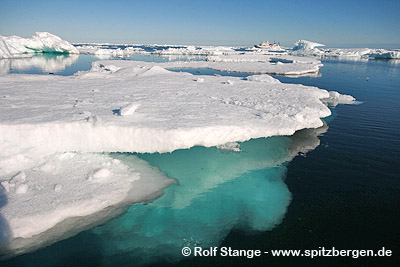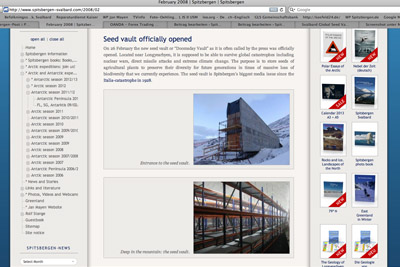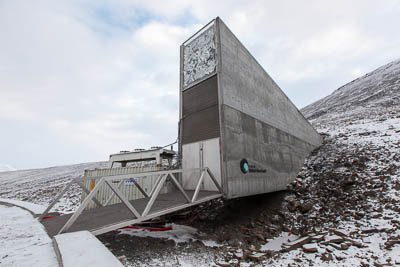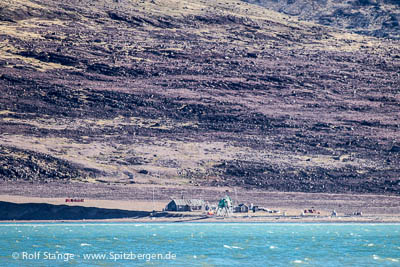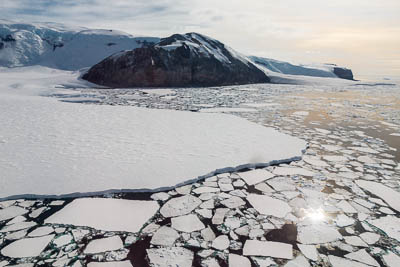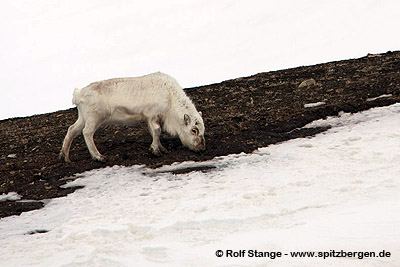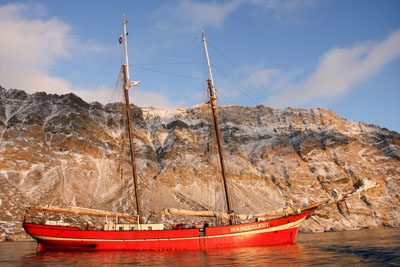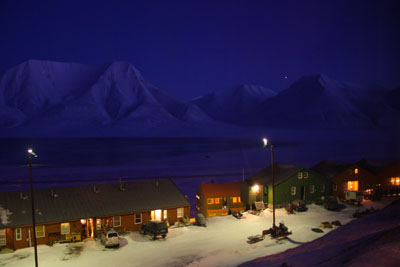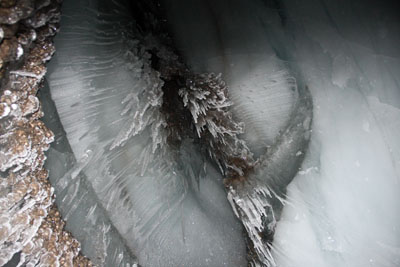-
current
recommendations- Liefdefjord
New page dedicated to one of Spitsbergen's most beautiful fjords. Background information and many photos.
- New Spitsbergen guidebook
The new edition of my Spitsbergen guidebook is out and available now!
- Liefdefjord
New page dedicated to one of Spitsbergen's most beautiful fjords. Background information and many photos.
Page Structure
-
Spitsbergen-News
- Select Month
- May 2025
- April 2025
- March 2025
- February 2025
- January 2025
- December 2024
- November 2024
- October 2024
- September 2024
- August 2024
- July 2024
- June 2024
- May 2024
- April 2024
- March 2024
- February 2024
- January 2024
- December 2023
- November 2023
- October 2023
- September 2023
- August 2023
- July 2023
- June 2023
- May 2023
- April 2023
- March 2023
- February 2023
- January 2023
- December 2022
- November 2022
- October 2022
- September 2022
- August 2022
- July 2022
- June 2022
- May 2022
- April 2022
- March 2022
- February 2022
- January 2022
- December 2021
- November 2021
- October 2021
- September 2021
- August 2021
- July 2021
- June 2021
- May 2021
- April 2021
- March 2021
- February 2021
- January 2021
- December 2020
- November 2020
- October 2020
- September 2020
- August 2020
- July 2020
- June 2020
- May 2020
- April 2020
- March 2020
- February 2020
- January 2020
- December 2019
- November 2019
- October 2019
- September 2019
- August 2019
- July 2019
- June 2019
- May 2019
- April 2019
- March 2019
- February 2019
- January 2019
- December 2018
- November 2018
- October 2018
- September 2018
- August 2018
- July 2018
- June 2018
- May 2018
- April 2018
- March 2018
- February 2018
- January 2018
- December 2017
- November 2017
- October 2017
- September 2017
- August 2017
- July 2017
- June 2017
- May 2017
- April 2017
- March 2017
- February 2017
- January 2017
- December 2016
- November 2016
- October 2016
- September 2016
- August 2016
- July 2016
- June 2016
- May 2016
- April 2016
- March 2016
- February 2016
- January 2016
- December 2015
- November 2015
- October 2015
- September 2015
- August 2015
- July 2015
- June 2015
- May 2015
- April 2015
- March 2015
- February 2015
- January 2015
- December 2014
- November 2014
- October 2014
- September 2014
- August 2014
- July 2014
- June 2014
- May 2014
- April 2014
- March 2014
- February 2014
- January 2014
- December 2013
- November 2013
- October 2013
- September 2013
- August 2013
- July 2013
- June 2013
- May 2013
- April 2013
- March 2013
- February 2013
- January 2013
- December 2012
- November 2012
- October 2012
- September 2012
- August 2012
- July 2012
- June 2012
- May 2012
- April 2012
- March 2012
- February 2012
- January 2012
- December 2011
- November 2011
- October 2011
- September 2011
- August 2011
- May 2011
- April 2011
- March 2011
- February 2011
- January 2011
- December 2010
- November 2010
- September 2010
- August 2010
- July 2010
- June 2010
- May 2010
- April 2010
- March 2010
- February 2010
- November 2009
- October 2009
- August 2009
- July 2009
- June 2009
- May 2009
- April 2009
- March 2009
- February 2009
- January 2009
- December 2008
- November 2008
- October 2008
- August 2008
- July 2008
- June 2008
- May 2008
- April 2008
- March 2008
- February 2008
- April 2000
- Select Month
-
weather information
-
Newsletter

| Guidebook: Spitsbergen-Svalbard |
Home → February, 2013
Monthly Archives: February 2013 − News & Stories
Ice loss in the Arctic: already up to 80 % at minimum times
The loss of large areas of sea ice in the Arctic Ocean is an ongoing process. In September 2012, new negative records were reached once again. Now there is some more information about the quality of the loss: as expected, the ice is not only shrinking in area, but also in volume. The minimum distribution, that is usually reached in September, is now down to only 20 % of what it was in 1980 – a loss of up to 80 % within just 2 decades.
These results are part of a recent study of data of US- and European research satellites. The processes driving the loss are both atmospheric and oceanic and are not yet fully understood. This makes it difficult to predict the further development in detail, but there is little doubt that the loss will continue.
Drift ice off East Greenland.
5 years of spitsbergen-svalbard.com-news
The opening of the seed vault near Longyearbyen was the occasion when this Spitsbergen news site was started, which is accordingly also celebrating its 5th anniversary these days. Three cheers!
This here is entry number 245. The frequency of entries, near 1 per week in average, has certainly increased in more revent times. Since number 1, the overall appearance of this website has changed completely. Its English section has also quite recently been moved to its own URL, spitsbergen-svalbard.com.
Screenshot of one of the first entries, February 2008.
Seed vault Longyearbyen – opened 5 years ago
On 26 February 2008, the global seed vault near Longyearbyen was officially opened. The Norwegian minister for agriculture and food will be in Longyearbyen on Tuesday to mark the 5th anniversary of the vault. The opening in 2008 attracted worldwide media attention. Since then, more than 770,000 seed samples from most countries on the globe have been stored in the 3 halls, which are supposed to accommodate at least 1.5 million samples in the future. The natural temperature of the surrounding permafrost is -3 to -4 degrees centigrade. The temperature of the seed vault is constantly kept near -18 degrees.
The entrance is not far from the airport. It is easily seen and accessible by road. The interior is not accessible for the general public.
The vault is largely financed by, amongst others, the Bill and Melinda Gates Foundation, but also by global companies such as Monsanto, who are otherwise not known as guardians of biodiversity.
The entrance to the seed vault near Longyearbyen.
Source: Norwegisches Ministerium für Landwirtschaft und Ernährung
Barentsburg: Spitsbergen’s strongest population growth
Barentsburg is currently the settlement with the strongest population growth in Spitsbergen: in early 2013, the official number of inhabitants was 471 persons or 101 more than 2 years ago. Longyearbyen has, in comparison, seen a plus of 30 during the same period. The minimum was reached in Barentsburg in 2010 with 370 persons.
The annual coal production has changed little and is still near 120,000 tons, a fraction of the production of modern coal mines elsewhere. The seams are said to last for another 12-15 years. Beyond mining, future fields of economic growth are supposed to be tourism and research. There may also be a new Russian coal mine in Colesdalen, but a decision about this is not expected before 2015.
“Our destination: communism”. This old sign is only of doubtful nostalgic value. Barentsburg’s future is supposed to be rather capitalistic.
Source: NRK
Austfjordneset
The trapper station at Austfjordneset in inner Wijdefjord may be opened again for trappers in autumn 2014. Until 2 years ago, the station, which has a comparatively long history and is now owned by the Sysselmannen, was open for use for hunters who would stay at least one year to hunt mainly polar fox and reindeer on a professional basis. The station was then closed for reasons that are somewhat unclear. Initially, it was stated that the operation required too much of the Sysselmannen’s resources, a reasoning that was difficult to follow: the maintenance was carried out anyway regardless of potential private use (and private users would actually contribute to maintenance) and the respective users would essentially be responsible for their own logistics and expenses (although it was custom that the Sysselmannen offered transportation with their vessel Nordsyssel, for example during the annual inspection trips in the late summer). In a recent press release, attention was rather drawn to inventory work on nearby historical sites and the local reindeer populations and their recovery from earlier hunting.
The regulation for professional hunting in Spitsbergen is currently being revised. The intention is to provide a framework to keep a tradition of professional all-year hunting alive while not putting any pressure on local animal populations. There are currently 3 privately owned trapper stations in use for professional hunting: Kapp Schollin in Bellsund, Farmhamna in Forlandsund and Kapp Wijk in Isfjord.
The trapper station at Austfjordneset, inner Wijdefjord.
Source: Sysselmannen
Ross Sea 2013: triplog now available
The first Ross Sea voyage of MV Ortelius has recently come to an end. The triplog is now available (click here). Extensive photo galleries will follow soon.
The Ross Sea coast near Coulman Island seen from the helicopter.
Milder winters: bad for polar mammals
Milder winter weather with rain instead of snow is nothing completely new for polar areas with a maritime climate such as Spitsbergen, but there is more of it in times of climate change, a tendency expected to increase in the future. Rain that freezes to ice on cold ground during an already difficult season has always been difficult for reindeer, and an increased frequency of such events will make their already challenging life certainly not easier.
Pregnant female polar bears need slopes with good snow cover in the early polar night and good hunting grounds on sea ice in spring. Both, but especially the latter, may be lacking more and more frequently in the future with a changing climate.
Spitsbergen-reindeer in late winter. Early May 2010, Eskerdalen.
Source: NINA
Ice in Tempelfjord too thin for Noorderlicht at usual position
As last year, the ice in Tempelfjord (the innermost branch of Isfjord) is currently not strong enough for the two-masted schooner Noorderlicht to anchor and freeze fast for winter excursions from Longyearben. The ship moved deeper into Tempeljord and is now at anchor at Kapp Schoultz.
Two-masted schooner Noorderlicht
Spitsbergen-Svalbard.com and the Ross Sea
The relative lack of activity in the news-section of Spitsbergen-Svalbard.com is partly due to the relative lack of relevant news from Spitsbergen (look at it this way: no news are good news!), partly also to the absence of the main author, who is currently as assistant expedition leader on MV Ortelius on what could be called an “Antarctic Odyssey” from Ushuaia to New Zealand. A brief visit to the Antarctic Peninsula was followed by a successful helicopter-Landing on the rarely visited Peter I Island. The passage from there into the Ross Sea took some more time than scheduled due to heavy sea ice, but an intense 4 days brought a wealth of beauty and rich experience. The voyage brought new land not also from a geographic, but also from a photographic perspective: HDR and panorama technics were explored. Results can soon be seen on this website.
Polar night in Longyearbyen
Queen Sonja of Norway in Longyearbyen
Queen Sonja of Norway opened the world northernmost jazz festival “Polarjazz” and the exhibition “Tre reiser – tre landskap” (Three journeys – three landscapes) at Svalbard gallery. Queen Sonja presented also her own pictures (photographs) from a visit to Spitsbergen in 2006. There are, amongst others, pictures from an ice cave in Bolterdalen near Longyearbyen.
Ice cave in Bolterdalen
News-Listing live generated at 2025/May/02 at 21:56:42 Uhr (GMT+1)
